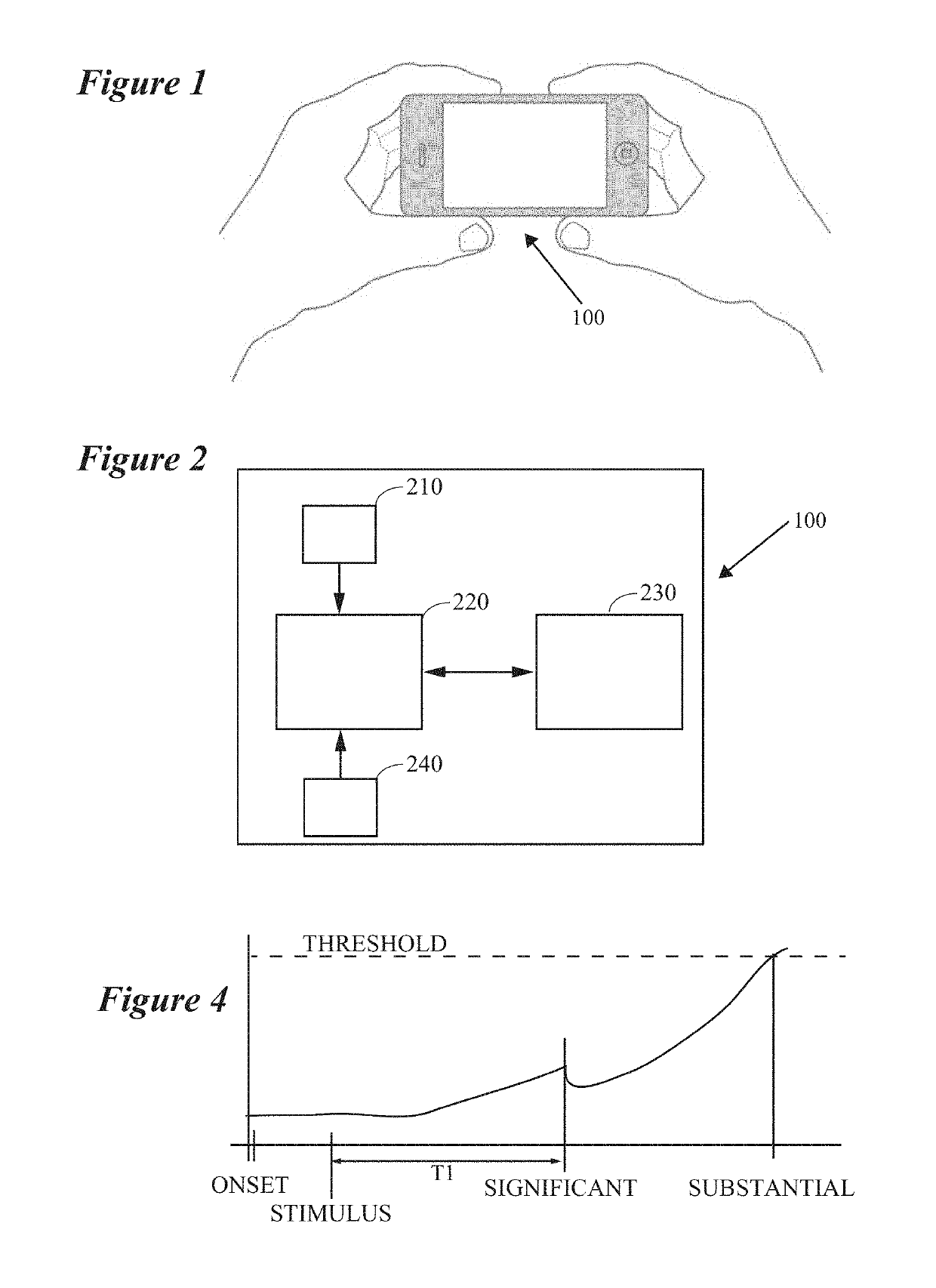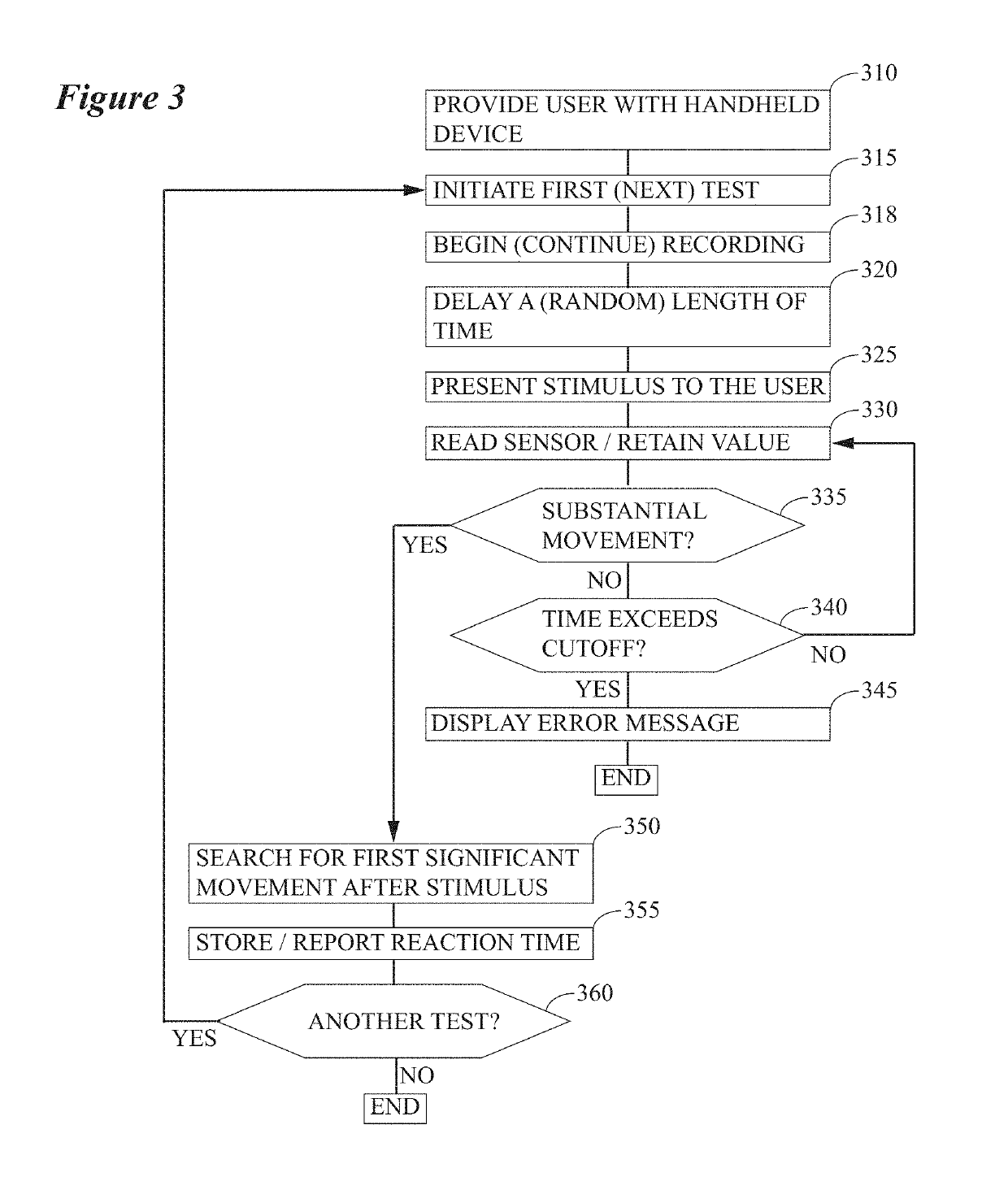System and method for measuring reaction time of a subject
a technology of reaction time and system, applied in the field of cognitive and neuropsychological assessment, can solve the problems of inaccurate assessment of reaction time, high variability of mobile device touch-screen reaction time testing, and inconsistent reaction time measuremen
- Summary
- Abstract
- Description
- Claims
- Application Information
AI Technical Summary
Benefits of technology
Problems solved by technology
Method used
Image
Examples
Embodiment Construction
[0024]The present invention, in one embodiment, is a software application running on a mobile device that is equipped with an accelerometer and, in some embodiments, a gyroscope. Readings from the device when then provide data that measures elements of cognitive function based on motion response. One software application measures simple and choice reaction time which might be initiated by, for example, presenting the user with a stimulus such as turning the entire screen to the color red, and timing a response to initiate movement. Another reaction time test presents the user with arrows that indicate the direction to move the device, as well as associative relationships with colors, which present an added level of cognitive function to recall color association. As with any reaction time test, the user is indicated that the stimulus will be presented and a one to four second fore period precedes the actual presentation of the stimulus.
[0025]The present invention, according to one em...
PUM
 Login to View More
Login to View More Abstract
Description
Claims
Application Information
 Login to View More
Login to View More - R&D
- Intellectual Property
- Life Sciences
- Materials
- Tech Scout
- Unparalleled Data Quality
- Higher Quality Content
- 60% Fewer Hallucinations
Browse by: Latest US Patents, China's latest patents, Technical Efficacy Thesaurus, Application Domain, Technology Topic, Popular Technical Reports.
© 2025 PatSnap. All rights reserved.Legal|Privacy policy|Modern Slavery Act Transparency Statement|Sitemap|About US| Contact US: help@patsnap.com


